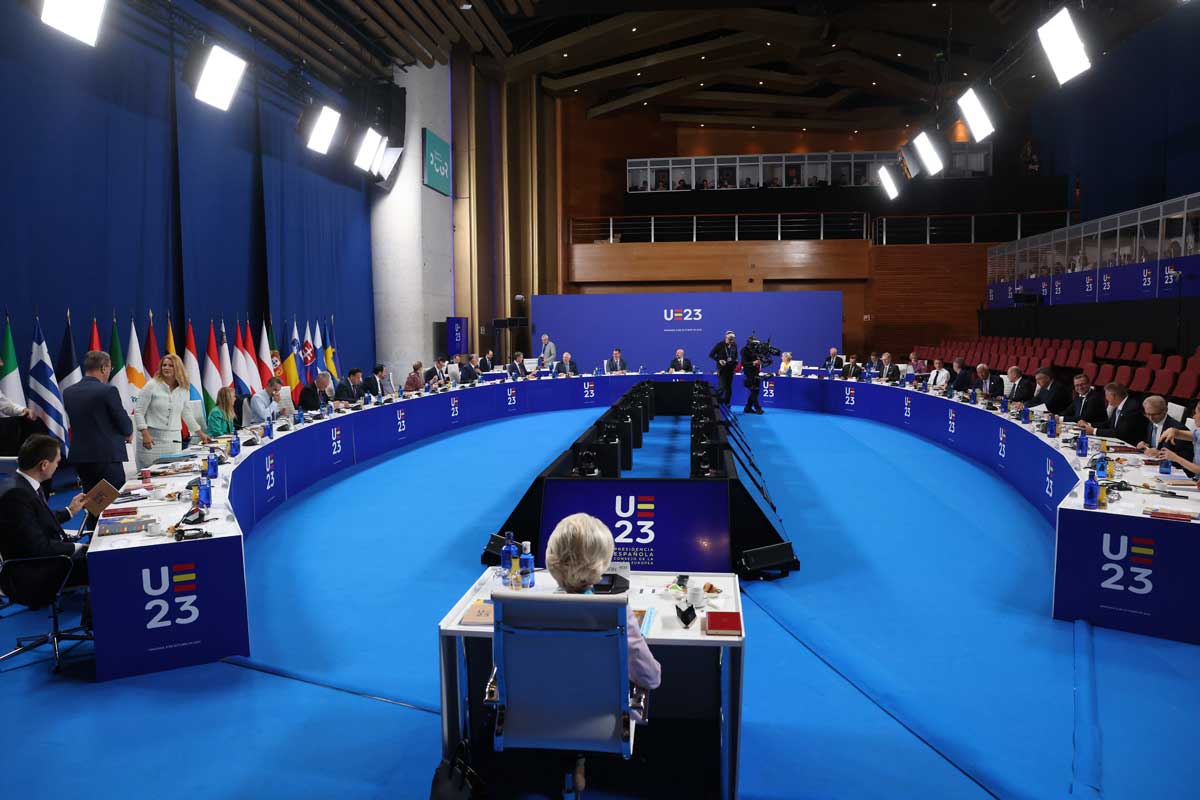European Union leaders gathered in Copenhagen to discuss a bold new defense initiative a so-called “drone wall” after a series of unidentified drones disrupted Danish airports and raised alarm about European airspace security. The incidents, which forced temporary shutdowns of six airports, came alongside Russian fighter jet violations over Estonia and drone flights into Poland. While Denmark has not formally blamed Moscow, Prime Minister Mette Frederiksen suggested Russia may be behind the provocations.
The summit also became a forum for broader security issues, including a proposal to use frozen Russian assets to finance a €140 billion loan to Ukraine. This debate comes at a critical moment, as U.S. military support for Kyiv looks uncertain, leaving Europe under growing pressure to step up its own defense spending.
Why It Matters
The drone incursions underscore Europe’s vulnerabilities in modern warfare. Cheap, unmanned systems can threaten critical infrastructure at a fraction of the cost of traditional missiles, forcing NATO and EU members to rethink defense strategy. A “drone wall” envisioned as a network of sensors, jammers, and air-defense systems could become one of the EU’s most ambitious collective security projects. At the same time, the debate over using frozen Russian assets reflects the bloc’s attempt to maintain Ukraine’s war effort while navigating complex legal and financial risks. Both issues highlight Europe’s struggle to adapt quickly to the realities of hybrid warfare and economic statecraft.
European Commission (Ursula von der Leyen): Promoted the “drone wall” as both timely and necessary; pushed for the frozen-assets loan to Ukraine.
NATO (Secretary General Mark Rutte): Backed the initiative, warning Europe cannot waste expensive missiles on cheap drones indefinitely.
Germany and France: Support strengthening European defenses but cautious on the frozen-assets plan, citing legal complications.
Belgium: Strongly warned that seizing central bank reserves could damage trust in the eurozone.
Ukraine: Welcomes both proposals as vital to sustaining its war effort.
Russia: Denies responsibility for drone incursions and airspace violations, dismissing European accusations as “hysteria.”
Future Scenarios
If the EU pushes ahead, the drone wall could become a flagship defense project, symbolizing Europe’s move toward greater self-reliance in security. This would mark a significant step in reducing dependence on the United States, especially as U.S. commitment to NATO appears less predictable under Trump’s administration. However, funding and coordination challenges remain immense, raising doubts about whether the project can be implemented quickly. On frozen assets, if Europe seizes the funds, it may strengthen Ukraine’s resistance but risk destabilizing trust in European financial markets. Alternatively, a more cautious approach may delay support for Kyiv at a time when speed could determine outcomes on the battlefield. In either case, the Copenhagen summit signals that Europe is entering a new phase of both military and financial confrontation with Russia.
With information from Reuters.


